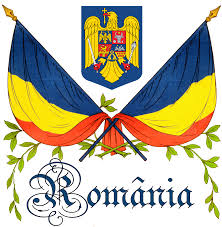Asynchronous systems theory, Editura Pământul, Piteşti, 2007/WSEAS, 2007
In Chapter 1 (Introduction) of this research monograph it is explained
that the book presents a real-time counterpart of the conventional
discrete switching theory, which is known to the author through the
work of G. Moisil. The author insists that certain concepts
introduced by him have the same names but are distinct from the
conventional concepts used in the literature: terms like asynchronous,
inertia, and delay are split into several concepts established by
mathematical definitions.
The book has three parts. The first one, entitled ``Asynchronous systems
theory'', begins with Chapter 2, in which the author
sketches the beginning of an analogue of mathematical analysis for
pseudo-Boolean functions, i.e., functions with real arguments and 0,1
values: he introduces limits, continuity, derivatives,
and differentiability.
For the rest of Parts 1 and 2 we follow the English abstract of
the book:
``In Chapter 3 we introduce a large class of models, namely the
pseudo-systems and a few concepts related to them (initial and final
states, initial and final time and initial and final state
functions). The most important type of the set of pseudo-systems
consists of the so-called systems. They represent that particular case
of non-empty pseudo-systems characterized by the existence of the initial
values of the inputs and of the states. The systems are treated in
Chapter 4 together with some new notions of further interest. In
Chapter 5 particular cases of systems are introduced and their
properties are investigated and commented upon. The next chapter deals with
the accesses and the transfers of the systems. The surjectivity,
controllability and accessibility are the subject matter of Chapter 7,
where comparisons with other variants existing in the literature are
made. Three types of stability of systems are the subject of
Chapter 8. A few examples are included. In Chapter 9, after a brief
presentation of the known non-formalized definitions of the
fundamental mode, the fundamental transfers are introduced and
analyzed. Then, the fundamental mode is introduced by using these
transfers and its properties are investigated. The relations between
the fundamental mode and accessibility are studied.
``Part 2 is dedicated to delay theory. It starts with an introduction to and
the study of delays in Chapter 10. Several types of delays are
included. The special case of bounded inertial delays is investigated
in Chapter 11, while in Chapters 12 and 13 the absolutely inertial
delays and the relatively inertial delays are treated. The latter
three chapters differ from the previous ones in the sense that they
contain a detailed comparison of our notions with the traditional
ones. The meaning and the interest for applications of the
notions and properties presented are carefully commented.''
Part 3 contains applications to certain specific circuits. Chapter 14
provides the equations of the most usual flip-flops. Chapter 15
presents some applications of the flip-flops, including the Mealy and
Moore models. Chapter 16 contains applications to delay theory.
The book contains a bibliography of 41 items, a very short appendix on
temporal logic, an index of terms, an index of notations and an
English abstract.
The book is highly technical and written in a very unusual style. There
are 330 theorems, 122 definitions and 133 remarks, some of which are very
long; for instance, Theorem 232 is stated on one and a half pages,
while Remark 81 occupies 3 pages. As a result, most of the book is
printed in italics (even the examples).
Part 3 is more explicit than the previous parts. However, the author
has missed an excellent opportunity to compare his results to those
provided by the conventional switching theory.
The aim of the book is to construct a mathematical theory of the
asynchronous circuits. This attempt is justified by the fact that some
digital electrical engineering concepts have only a descriptive
approach and a deeper understanding of the phenomena requires their
mathematical formalization in a unified framework. The basic notions of
this theory are those of (asynchronous) pseudo-systems and of
(asynchronous) systems.
A pseudo-system is a multi-valued function
which associates to an input u:R→Bm
(where B is the binary Boolean algebra) some sets (empty or
non-empty) of states u:R→Bn, the inputs u
and the states x having some specified properties. If the inputs and
the states are required to have a limit as t→∞ and the
considered sets of states are non-empty, then the pseudo-system is a
system. It is stated that the advantage of the author's concept of
pseudo-system is that it highlights the duality between the initial
values and the final values of the states and of the time.
The book is structured in three parts: 1. The Theory of Asynchronous Systems (8
chapters), 2. Delay Theory (4 chapters) and 3. Applications (3
chapters).
After the introductive Chapter 1 which contains the history
of the asynchronous systems theory with emphasis on Grigore Moisil's
work, Chapter 2 studies the binary Boolean algebra B and the
properties of the functions f:R→B and f:R→Bn.
In Chapter 3 the pseudo-systems and some
related notions are defined and this study is continued for
(asynchronous) systems in Chapter 4, including dual and inverse
systems, Cartesian products, parallel and series connections,
intersection and union of systems. Chapter 5 presents the general
properties of the systems such as self-duality, symmetry,
time-invariance, as well as some definitions of non-anticipation and
injectivity and the behaviour of the above described operations with
respect to these properties. Chapter 6 treats the properties which
describe the manner in which the states of the system can be accessed
and transferred. Chapter 7 is devoted to the concepts of surjectivity,
controllability and accessibility (reachability), while stability is
the matter of Chapter 8. Lists of different definitions are analysed,
as well as their connections. Chapter 9 starts with the presentation of
the evolution of the concept of fundamental mode in literature and than
this concept is defined by means of the fundamental transfers. An
existence theorem for the fundamental modes is given and the
relationship with some properties of accessibility is emphasized.
Part 2, devoted to the delay theory, starts in Chapter 10 with an overview
of delays. In Chapter 11 the author assembles different properties and
operations with bounded delays. The same lists of properties and
operations are studied for absolutely inertial delays in Chapter 12 and
for relatively inertial delays in Chapter 13, where the paradox of
inertia is discussed as well as the deterministic and Zeno delays.
Part 3 contains a series of applications to different types of elements and
circuits, aiming to emphasize the importance of the developed theory.
Chapter 14 deals with the equations of the ideal latches and some
models (Mealy, Moore etc.) are examined. Some applications of the
flip-flops and of the delay theory are presented in Chapters 15 and 16
respectively. The text contains 121 definitions and 323 theorems. A lot
of examples (109) and remarks (133) illustrate and clarify different
aspects and connections of the theory. The book ends with an index, a
list of notations and a list of 41 references.


